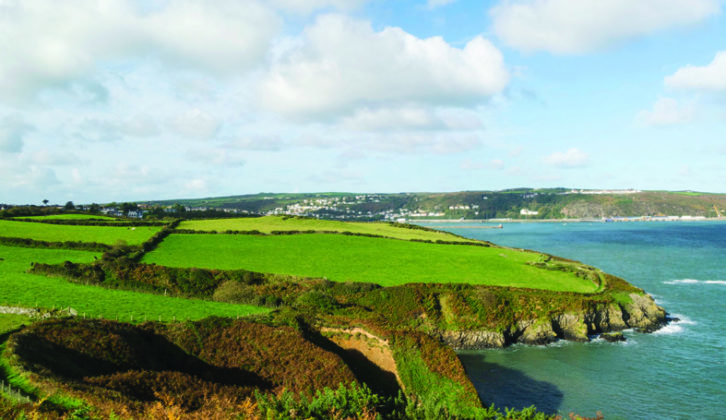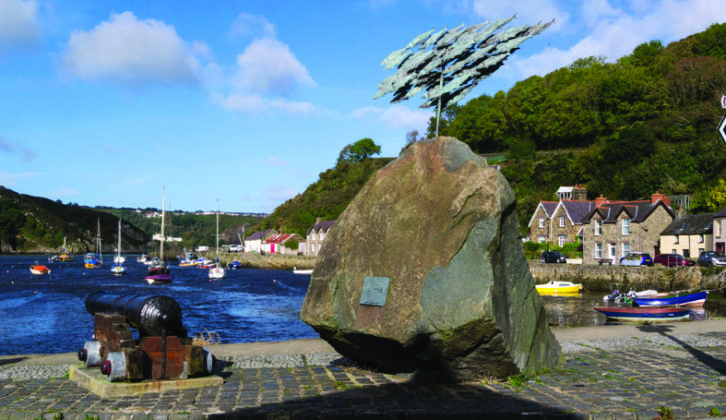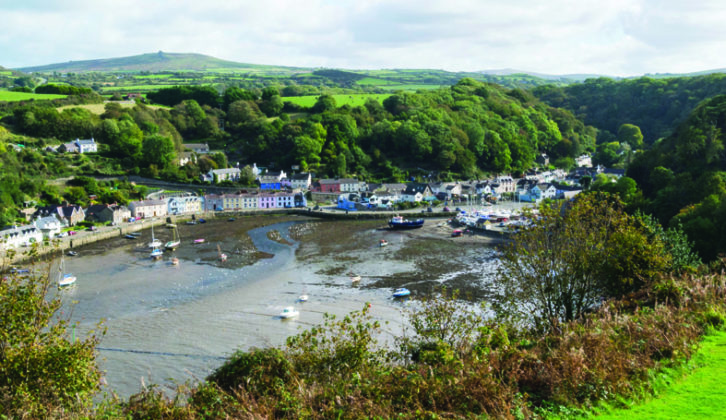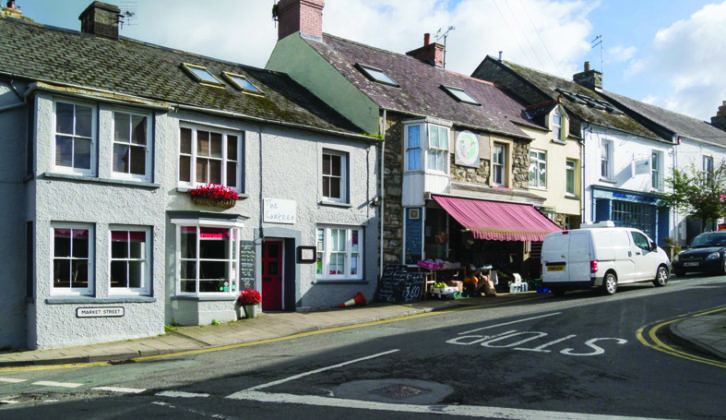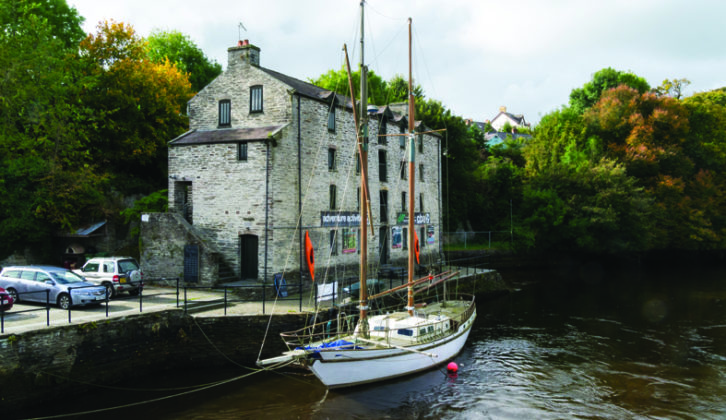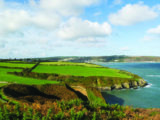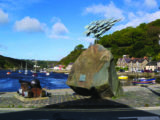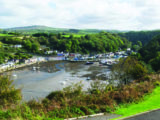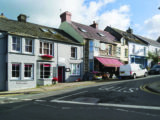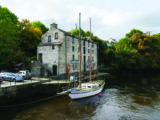We had been looking for a short break in Hilary, our Hymer C-Class motorhome, and considered returning to the Gower Peninsula, where housemate Pearl and I found an excellent site. However, we only had limited time available, so this time we plumped for a shorter journey, to Fishguard in North Pembrokeshire for walking the Pembrokeshire Coast Path
Where possible, we prefer to park up at a site and then walk and use public transport to explore the area. Fishguard Bay Resort fulfilled this criterion, being two miles from town and just three-quarters of a mile from the bus stop for buses between Aberystwyth and Haverfordwest.
The campsite owners were very friendly and helpful, the facilities were vey clean and warm, and the view across Fishguard Bay was simply spectacular. The site was quiet during our visit, but I suspect that negotiating the narrow lane to the entrance might be tricky at busier times.
The Pembrokeshire Coast Path, a designated National Trail, runs through the campsite, so we decided to use this route to walk into Fishguard, along the cliffs with views across the Irish Sea.
This very popular trail, part of the All Wales Path, affords lucky walkers views of porpoises, great seals and dolphins, while stonechats, cormorants and northern fulmars are just some of the birds that can be seen on this iconic path.
An ancient trading town
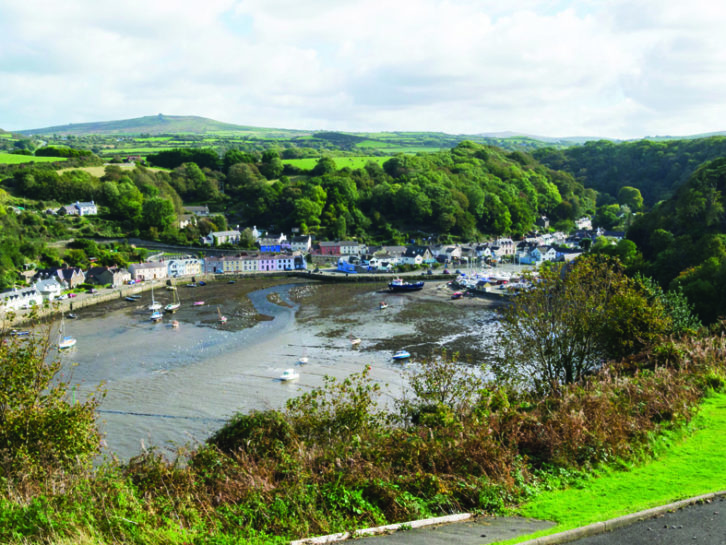
Fishguard, known in Welsh as Abergawaun, which means ‘Mouth of the River Gwaun’, is divided into two parts – the main town and Lower Fishguard, known locally as Lower Town.
Lower Fishguard is thought to be the site of the hamlet from which the modern town developed. It is situated in a deep valley where the River Gwaun runs into Fishguard Bay; the settlement now stretches along the north slope of the valley.
Vikings frequently raided the Welsh coast during the late 10th century, setting up trading posts and settlements during this time. The name Fishguard derives from the old Norse fiskigardr, meaning ‘fish catching enclosure’. The name was then anglicised in the 19th century, from Fiscard to its current form.
The town’s rather turbulent history continued in the 18th century, when more raiders arrived, this time from the far west. In 1776, America won its independence from Britain, although this was not accepted by the British until 1783. In 1778, inventor and diplomat Benjamin Franklin became America’s first ambassador to France. It was apparently Franklin who encouraged Stephen Manhant, commander of the Black Prince, an American privateer – a ship authorised by its government to attack other nations’ ships – to carry out a raid on Fishguard in 1779. Manhant bombarded the town, causing some damage to buildings when the townspeople refused his demand for £1000. When a local ship-owner attacked the raiders, Manhunt gave up and sailed away. However, the raid convinced the Government that this thriving port required better defences, so in 1781, work commenced on constructing Fishguard Fort.
This structure fell out of use in the early 19th century, with remains of the surrounding ditch, the ammunition storehouse and part of the gun battery all that can be seen today.
We walked through the ruins from the Coast Path, before descending to the Lower Town and taking a pleasant stroll around the harbour.
Invaders from the sea
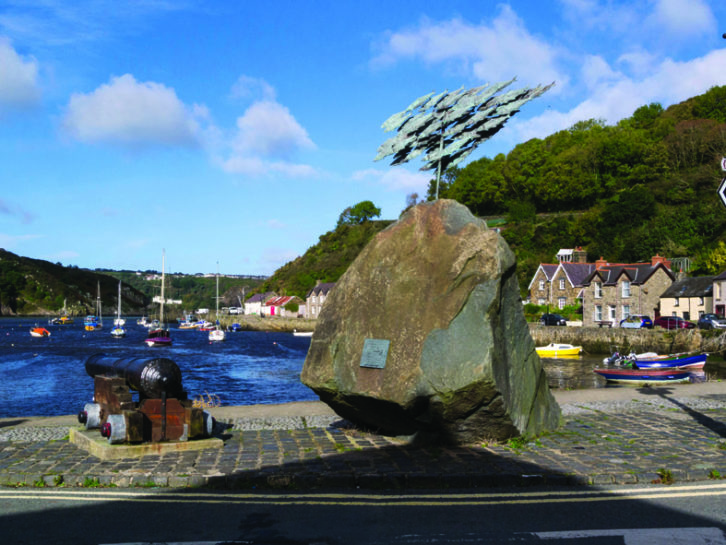
The fort did see action – in 1797, its forces were required to repel an attack by soldiers of the French Revolutionary Army. This became known as the Battle of Fishguard, often referred to as the last successful invasion of mainland Britain.
The fort’s gunners responded to the incursion by firing blanks to conserve their small stock of ammunition, making enough noise to persuade the French to land away from Fishguard.
Local women were also involved in defending the town. One in particular, Jemima Nicholas, armed only with a pitchfork, singlehandedly rounded up a dozen (drunken) soldiers, who surrendered shortly afterwards.
Jemima lived to the then very impressive age of 82, and her grave is in the grounds of the town’s 19th-century parish church, St Mary’s. There is no headstone, but there is a memorial to her just outside the church.
The French soldiers surrendered two days later, the peace treaty being signed in The Royal Oak public house. Outside Fishguard, there is a stone memorial commemorating this event. In West Street, another memorial marks its bicentenary, and in the Town Hall Library, a fine tapestry, designed and sewn by local women in 1997 and emulating the Bayeux Tapestry, tells the story.
In the 18th century, Fishguard, developed as a herring port, with 50 vessels trading oats and salted herring to Ireland. Bristol and Liverpool, and this is still a typical fishing village, with a short tidal quay. However, these days, wandering through the quiet, narrow streets surrounding the harbour, it is difficult to imagine the hustle and bustle of times gone by.
Links with Ireland
We ascended the steep and winding hill path that joins the two sections of the town, the main part being the modern development, with shops and cafés in the High Street, and St Mary’s Church.
This was the area of the Norman settlement, between the church at the north end and the remains of a Norman motte to the south. The western part, facing Goodwick, grew in the first decade of the 20th century, with the development of Fishguard Harbour. It is from here that Stena Line operates a ferry service, to Rosslare, in the Republic of Ireland.
Along one of the roads leading off the High Street and overlooking the Lower Town harbour, the Forced Stone Circle can be found. This was erected in 1936 to commemorate the National Eisteddford, the great celebration of Welsh music, literature and art. Each stone is inscribed with the name of the parish that provided it.
Having seen all we wanted in the town, we caught the local bus to Newport, a small village just along the coast towards Cardigan.
Newport is a pretty village with a surprisingly good selection of hotels, restaurants and cafés serving local produce and locally caught fish.
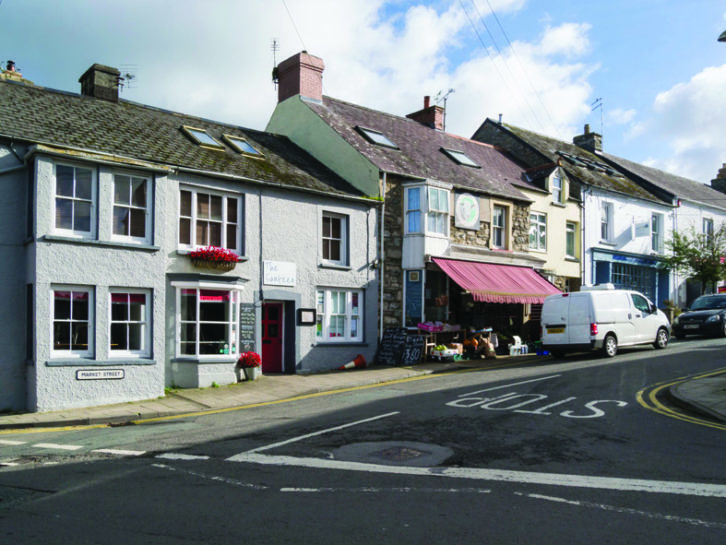
This was a port in ancient times, and in the Middle Ages, a small town developed here, at the mouth of the River Never, on the slopes of Carn Ingli, in the Preseli Hills – now part of the Pembrokeshire Coast National Park.
We walked down to the estuary along the Coast Path and the beautiful sandy beach. This is a very popular area for swimming, windsurfing, sailing, canoeing and fishing – and it’s easy to see why.
It is also a good spot for birdwatching. certainly a lovely village to spend some time in and well placed for visiting the many Celtic monuments in the surrounding area.
Castle and culture
The next day, we walked along the campsite’s entrance lane to catch the bus into Cardigan, the main town at the northern end of the Pembrokeshire Coast Path and the starting point of the Ceredigion Coast Path.
This is a bustling market town on the River Teifi, where ancient structures – a medieval castle and narrow streets – and modern facilities sit comfortably side by side.
Cardigan was once the second most important port in Wales, but now has only the occasional fishing boat on the river. It is, however, a very important cultural centre, being the site of the first National Eisteddford in 1176, and hosts the national spring of the Roman Catholic Church in Wales, which attracts thousands of pilgrims every year. It boasts a variety of unusual shops and a market housed in the Guildhall, which was built in 1860 and was one of the first buildings designed in the Ruskinian (or High Victorian) Gothic architectural style.
Cardigan Heritage Centre can be found in an 18th-century warehouse on Teifi Wharf. Here you can discover the fascinating history of the port, from its medieval origins through the thriving 18th and 19th centuries, with the main display showing local exhibits from pre-Norman times to the present day. There is also a café on the terrace overlooking the river, picnic areas, toilets and a gift shop, all with disabled access.
Wildlife and birdlife
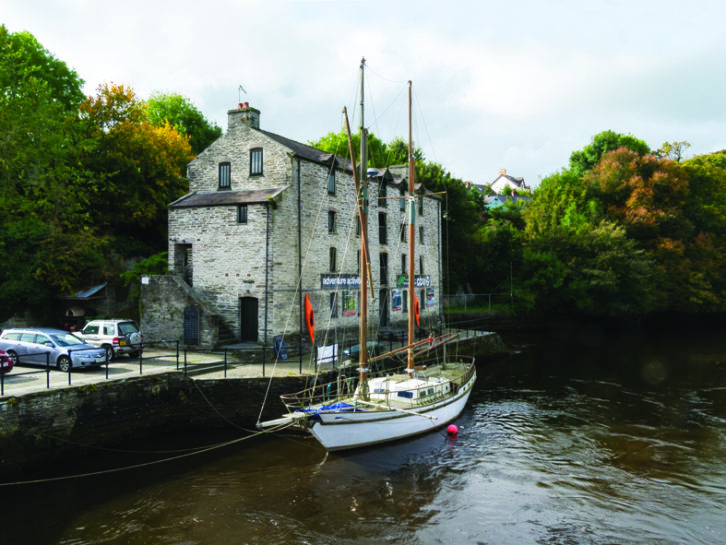
For those who like animals, a visit to Cardigan Island Coastal Farm Park is recommended; here visitors can view and feed a variety of creatures. The park is in a stunning location on a headland, overlooking the nature reserve on Cardigan Island just 200 yards offshore, which is home to a lock of Soay sheep and thousands of seabirds.
Views of the local colony of Atlantic grey seals, which breed in the caves below the cliffs, are almost guaranteed. They give birth here in September and October, when the fluffy white pups can be spotted on the rocks. Bottle-nosed dolphins are also frequent visitors to the area, an unforgettable sight as they leap above the water.
Further inland, the Welsh Wildlife Centre, near Cilgerran, has a network of footpaths leading to the River Teifi, water meadows, woodlands and a spectacular gorge. It is possible to see a huge variety of birds and mammals here, including otters, braggers, deer and water vole.
West Wales really does have something for everyone, particularly if you are willing to put on a pair of boots and take time to wander some of the wonderful paths the area has to offer.
TOUR ESSENTIALS
WAY TO GO
From North Wales, we took the A487 to Porthmadog, then the A470 to Dolgellau before redoing the A487 through Aberystwyth towards Fishguard.
WHERE WE STAYED
Fishguard Bay Resort
- Dinas Cross, Newport, Pembrokeshire, SA65 9ET
- Tel 01248 811 415
- Web www.fishguardbay.com
If you liked this… READ THESE:
South Wales: Practical Motorhome Travel Guide
North Wales: Practical Motorhome Travel Guide
If you’ve enjoyed reading this article, why not get the latest news, reviews and features delivered direct to your door or inbox every month. Take advantage of our brilliant Practical Motorhome magazine SUBSCRIBERS’ OFFER and SIGN UP TO OUR NEWSLETTER for regular weekly updates on all things motorhome related
Bottle-nosed dolphins are also frequent visitors to the area, an unforgettable sight as they leap above the water
